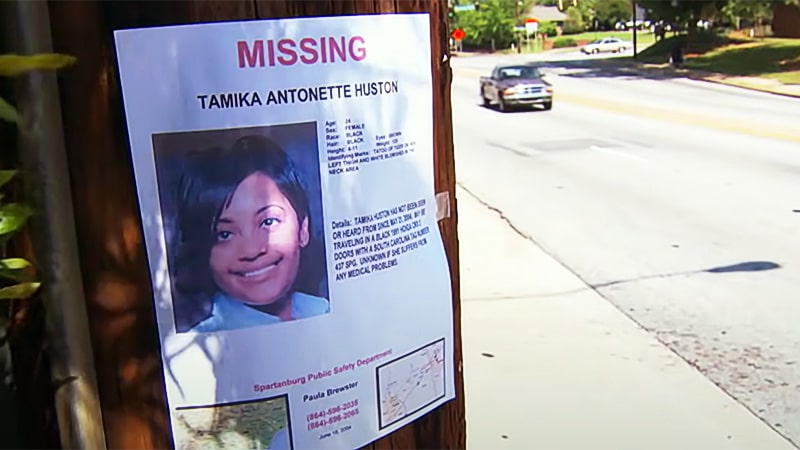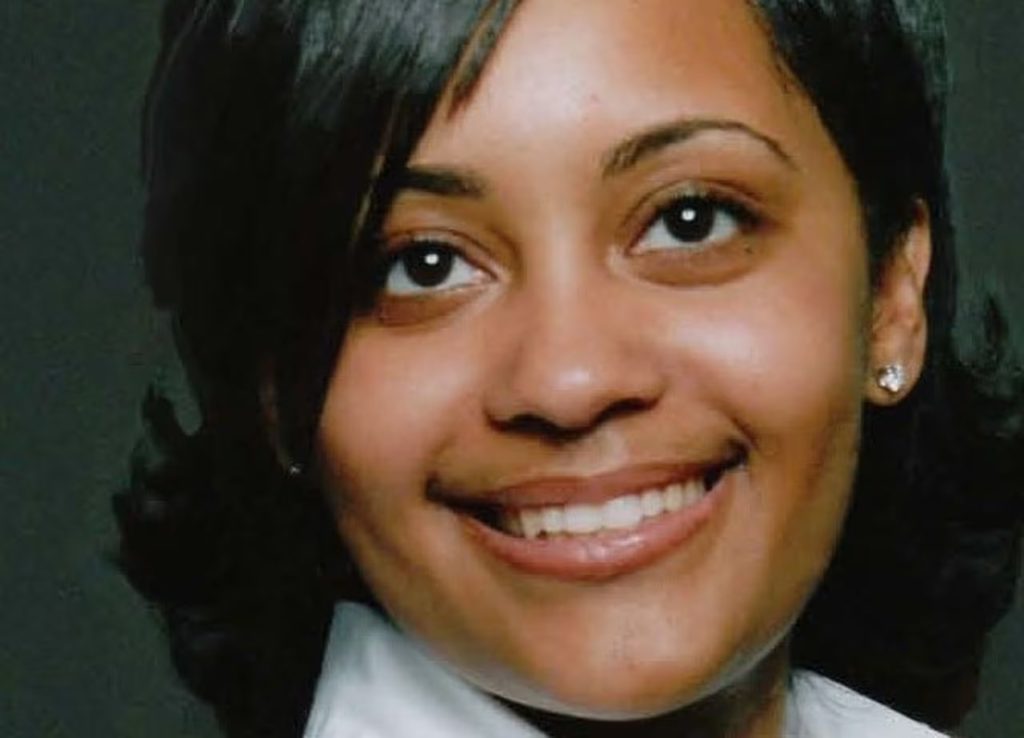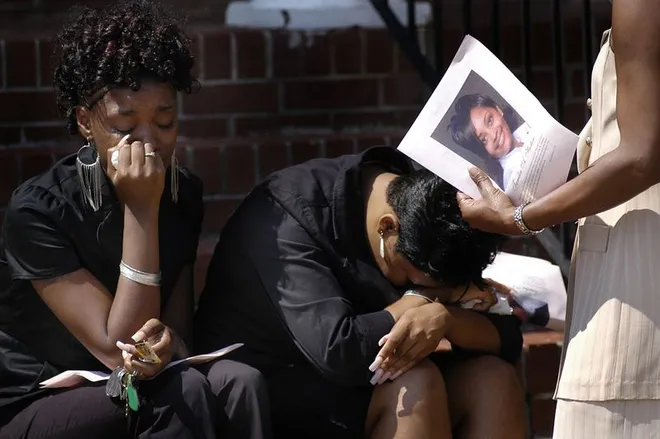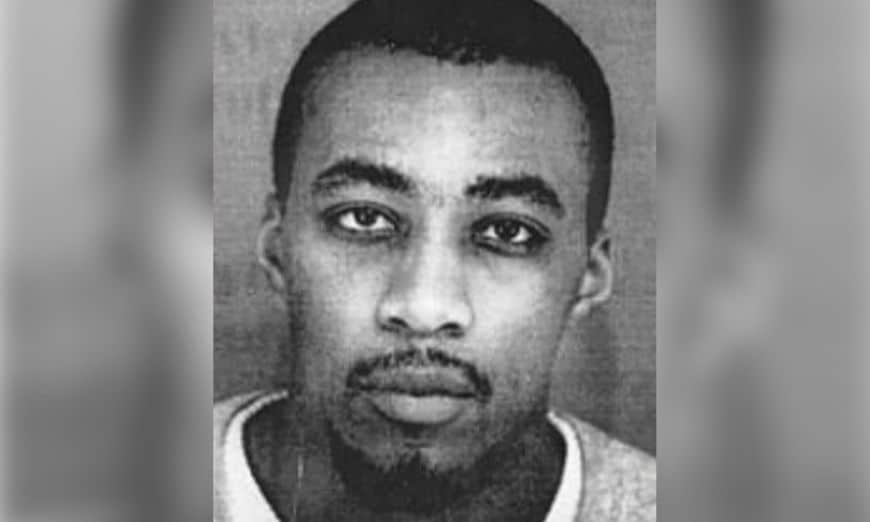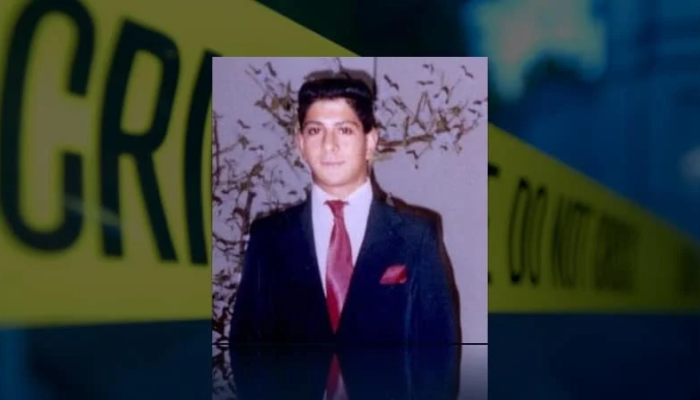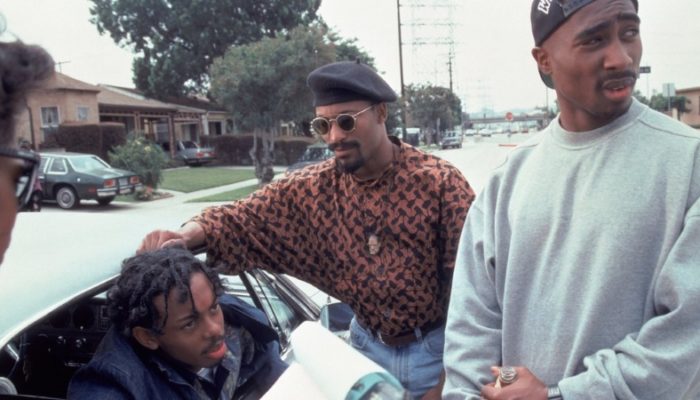In the spring of 2004, Tamika Huston, a vibrant 24-year-old Black lady from Spartanburg, S.C., vanished without a trace. Despite the urgency and heartbreak that usually accompany missing individual cases, Tamika’s story became met with an obtrusive silence from national media outlets. This introduction sets the stage for an exploration into the unsettling media disparities surrounding Tamika’s disappearance, a sad tale that exposes a deeply ingrained bias in coverage. While current instances of missing white ladies acquired exhaustive attention, Tamika’s case became seemingly omitted. This blog delves into the life of Tamika Huston, the person behind the headlines, aiming to get to the bottom of the complex internet of factors that contributed to the unequal illustration in media coverage and to endorse justice inside the face of systemic forget.
Tamika Huston: The Person Behind the Headlines
Tamika Antonette Huston, born on December 11, 1979, left an indelible mark on the world for the duration of her short 24 years. A proud African-American lady, Tamika’s tale goes past the headlines that in the long run marked her tragic give up. Hailing from Spartanburg, South Carolina, Tamika turned into a vibrant character with goals and aspirations that resonated with individuals who knew her intimately.
Her lifestyle was all at once reduced quickly when she disappeared in the spring of 2004, sending shockwaves via her community and past. Unfortunately, Tamika’s fate took a devastating flip, as she later became determined to be murdered. The lack of this younger lady reverberated far beyond the borders of Spartanburg, exposing the tough realities faced using marginalized groups, not only inside the search for justice but also within the media’s insufficient coverage of such cases.
The Media Disparity: Unveiling the Bias
The stark contrast in media coverage between Tamika Huston’s disappearance and that of white people increases uncomfortable questions on systemic biases inside the media landscape. The disproportionate attention given to instances concerning missing white ladies, along with the drastically protected Laci Peterson, reveals a troubling fashion that extends beyond remote incidents. This phase ambitions to delve into the foundation causes of this bias, exploring societal elements, racial prejudices, and media practices that perpetuate an imbalanced narrative.
Historically, cases involving people from marginalized groups have struggled to garner the identical level of attention as the ones of their white opposite numbers. This imbalance now not only skews public notions but also hampers investigations and perpetuates the unjust perception that certain lives are more treasured than others.
By unveiling the inherent bias in media insurance, we attempt to provoke an important talk on the need for reform within newsrooms and editorial practices. It is imperative to deal with those disparities head-on, fostering a media environment that values and prioritizes all missing humans, regardless of their racial or ethnic heritage. Only through acknowledging and dismantling those biases are we able to wish to attain an honest and equitable representation within the insurance of tragic incidents like Tamika Huston’s disappearance.
The Disappearance and Investigation
Tamika Huston’s disappearance in the spring of 2004 marked the beginning of a harrowing bankruptcy that might divulge not only the flaws in media insurance but also the challenges confronted by the local government in conducting radical research.
Chronology of Tamika’s Disappearance:
- Early Spring 2004: Tamika Huston, a 24-year-old African American lady, becomes ultimately visible in Spartanburg, South Carolina.
- Missing Person Report: Concerns arose as attempts to touch Tamika proved unsuccessful, prompting her loved ones to file a missing person case.
- Initial Investigation: The local government unexpectedly initiated an investigation, engaging in interviews and using surveillance pictures to piece together the occasions leading to Tamika’s disappearance.
- Community Involvement: Recognizing the urgency, Tamika’s community actively engaged in grassroots efforts, organizing seek parties and utilizing social media to raise awareness.
- Media Silence: Despite neighborhood efforts, countrywide media remained in large part silent on Tamika’s case, contributing to challenges in disseminating crucial data.
- Discovery of Tamika’s Fate: Tragically, Tamika’s lifeless frame was found, underscoring the effect of media disparities on the investigation’s outcome.
Initial Response from Local Authorities:
The preliminary response from the nearby government to Tamika Huston’s disappearance:
- Missing Person Report: Promptly initiated research upon receiving the missing person cases filed with the aid of Tamika’s concerned circle of relatives and buddies.
- Coordination and Interviews: Law enforcement coordinated efforts, carrying out interviews and making use of surveillance photos to establish a timeline of Tamika’s final known sports.
- Search Operations: Launched search operations in key areas, mobilizing resources inclusive of seek dogs and volunteer aid to cover the floor effectively.
- Challenges: Faced challenges inclusive of constrained leads and assets, hindering the development of the research.
- Media Neglect Impact: The absence of countrywide media coverage throughout this essential segment had giant repercussions, impacting the dissemination of information and delaying the general public attraction for help.
Roadblocks within the Investigation and Media Neglect:
The research into Tamika Huston’s disappearance confronted giant roadblocks:
- Limited Leads: Despite diligent efforts, the government encountered an absence of leads essential to progressing the research.
- Resource Constraints: Resource boundaries, along with personnel and technology, hampered the quest efforts and hindered intensive research.
- Media Neglect: The absence of country-wide media insurance impeded the dissemination of critical data, delaying public recognition and help.
- Impact on Community Cooperation: Media forgetting potentially reduced the network’s engagement, affecting the willingness of ability witnesses to come ahead with records.
- Systemic Racial Disparities: Tamika’s case highlighted systemic racial biases, with the media forgetting about perpetuating inequalities within the coverage of missing person cases.
Community Outcry and Grassroots Movements:
In response to the inadequate media coverage and the demanding situations confronted by way of law enforcement, Tamika Huston’s community rallied collectively in an inspiring display of cohesion and determination. The collective outcry and grassroots actions that emerged performed a pivotal function in raising focus approximately Tamika’s disappearance and stressful justice.
Community-Led Search Efforts:
- Frustrated by the restricted progress inside the respectable investigation, Tamika’s network took topics into their palms.
- Volunteers organized seek events, dispensed flyers, and applied social media structures to mobilize support and interact with the broader public.
Grassroots Advocacy for Media Attention:
- Recognizing the electricity of media interest, network individuals actively advocated for Tamika’s tale to be covered on the countrywide level.
- Grassroots actions used social media campaigns and neighborhood occasions to draw interest in the disparities in media insurance primarily based on race.
Amplifying Tamika’s Story:
- Through community-driven initiatives, Tamika’s story gained traction in the nearby sphere.
- Grassroots efforts sought to humanize Tamika, emphasizing her individuality and the injustice of her case being overshadowed by the media’s biases.
Intersectionality in the Fight for Justice:
- Tamika’s case has become a symbol of wider combat in opposition to racial disparities in missing person cases.
- Grassroots movements highlighted the intersectionality of the difficulty, emphasizing the need for an extra inclusive and equitable method to media insurance and regulation enforcement responses.
Collaborative Advocacy with National Organizations:
- Community advocates collaborated with countrywide companies that targeted racial justice and equal representation.
- This collaboration added extra sources and knowledge to the purpose, amplifying the impact of grassroots efforts.
Media Accountability and Advocacy
The critical examination of media responsibility and advocacy is paramount in the knowledge of the bigger dynamics that contributed to the disparities in Tamika Huston’s case.
Challenges in Media Accountability:
- Media outlets often operate inside established frameworks that perpetuate biases.
- Holding those shops chargeable for their function in perpetuating racial disparities requires a nuanced understanding of the systemic problems inside the media industry.
Advocacy for Equal Representation:
- Grassroots moves, advocacy groups, and concerned individuals actively called for identical representation in media insurance.
- Social media structures became powerful gear for advocates, allowing them to amplify their voices and undertake media retailers to deal with their biases.
Transparency and Ethical Reporting:
- Calls for transparency and moral reporting practices gained momentum.
- Advocates emphasized the want for media stores to critically have a look at their editorial selections, prioritize range and make sure that testimonies are included primarily based on their inherent newsworthiness in place of the demographics of the people concerned.
Collaborative Initiatives with Media Outlets:
- Advocacy companies engaged in optimistic talks with media stores to foster know-how and collaboration.
- By working together, advocates and media specialists sought to bridge the space and deal with the inherent biases that contribute to unequal coverage.
Impact of Social Media on Accountability:
- Social media structures served as catalysts for change, allowing advocates to mobilize public opinion and keep media outlets responsible in real-time.
- Hashtags and online campaigns facilitated the dissemination of records and endorsed the collective movement.
Tamika’s Legacy and the Fight for Equality
Tamika Huston’s legacy extends some distance past the tragic instances of her disappearance and murder. Her tale serves as a poignant reminder of the systemic troubles inside media insurance and the ongoing fight for equality inside the illustration of the missing person case.
Impact on Media Coverage:
- Tamika’s case brought about a reevaluation of media practices and biases.
- The scrutiny added to endure on her story has contributed to a heightened cognizance within media stories about the need for fair and equitable insurance.
Changes in Media Landscape:
- Over the years following Tamika’s case, there have been substantial changes in the media landscape.
- Increased sensitivity to racial disparities and developing recognition of the significance of various illustrations have brought on shifts in editorial selections.
Community Empowerment:
- Tamika’s legacy has empowered communities to actively engage in shaping the narratives surrounding missing persons cases.
- Grassroots actions sparked through her case have stimulated groups to demand equal representation and accountability from media retailers and regulation enforcement organizations.
Advocacy Initiatives:
- Advocacy projects, spurred by Tamika’s tale, have received momentum.
- Organizations devoted to racial justice, equality, and media reform have amplified their efforts, running closer to systemic modifications that address the basic reasons for biased coverage.
Ongoing Fight for Equality:
- Tamika’s legacy lives on through the ongoing fight for equality.
- Advocates, community leaders, and involved individuals keep to challenge systemic biases and work in the direction of dismantling boundaries that perpetuate unequal media representation.
Additional Tips:
- Legal Implications: Briefly touch on any legal elements of the case, such as the arrest, trial, and conviction of the culprit if relevant. Discuss the felony court cases and outcomes.
- Impact on Legislation: Explore whether Tamika’s case prompted adjustments in law or rules related to missing persons, especially regarding media insurance requirements and regulation enforcement strategies.
- Community Healing Initiatives: Highlight any projects or support organizations that emerged inside Tamika’s network after her tragic homicide. Discuss how the network got here together to heal and recommend alternatives.
- Interviews with Family and Friends: Include excerpts from interviews with Tamika’s family and buddies, providing non-public insights into her character, the impact of her loss, and their perspectives on the media’s role in the aftermath.
- Updates and Developments: If there have been any latest updates or developments in Tamika’s case or related troubles, briefly mention them. This may want to consist of endured advocacy efforts, media reforms, or network-led initiatives.
Conclusion:
In the aftermath of Tamika Huston’s tragic disappearance and the following disparities in media coverage, her legacy stands as a rallying cry for justice and equality. Her tale has become an effective catalyst for exchange, prompting essential conversations about systemic biases inside media reporting on missing person cases. As we replicate Tamika’s existence, we confront the stark reality that unequal illustration persists, and marginalized groups face demanding situations in garnering the eye they deserve.
The fight for justice and equal media coverage is ongoing, fueled by grassroots movements and advocates committed to breaking down boundaries. Tamika Huston’s legacy serves as a poignant reminder that each person, regardless of race or heritage, deserves to have their tale heard and their disappearance stated. It is incumbent upon us to keep this fight, ensuring that the media landscape evolves closer to fairness, inclusivity, and authentic compassion for all the ones laid low by the tragedy.
FAQs:
Q1: Who turned into Tamika Huston?
A: Tamika Huston changed into a 24-year-old African-American lady who tragically disappeared in the spring of 2004 from Spartanburg, South Carolina. Her case gained attention due to the stark disparities in media insurance compared to instances regarding missing white people.
Q2: Why did Tamika Huston’s case receive confined media insurance?
A: Tamika’s case obtained confined media coverage, highlighting systemic biases in media reporting. The media’s tendency to prioritize cases concerning white individuals over those of vibrant contributed to this disparity.
Q3: What were the demanding situations faced by neighborhood authorities in investigating Tamika’s disappearance?
A: Local government confronted challenges which included limited leads, resource constraints, and the absence of national media interest, which hindered the progress of the research.
Q4: How did the network respond to Tamika Huston’s disappearance?
A: Tamika’s community spoke back with grassroots efforts, organizing seek parties, distributing flyers, and utilizing social media to raise consciousness about her disappearance, given the lack of media coverage.
Q5: Were there any changes in media coverage standards following Tamika’s case?
A: The aftermath of Tamika’s case prompted discussions about media biases, however concrete modifications in insurance requirements can also vary. It’s important to research whether her tale led to any reforms in media practices.
READ MORE: Unraveling the Mystery: The Abduction and Murder of Janet Chandler

